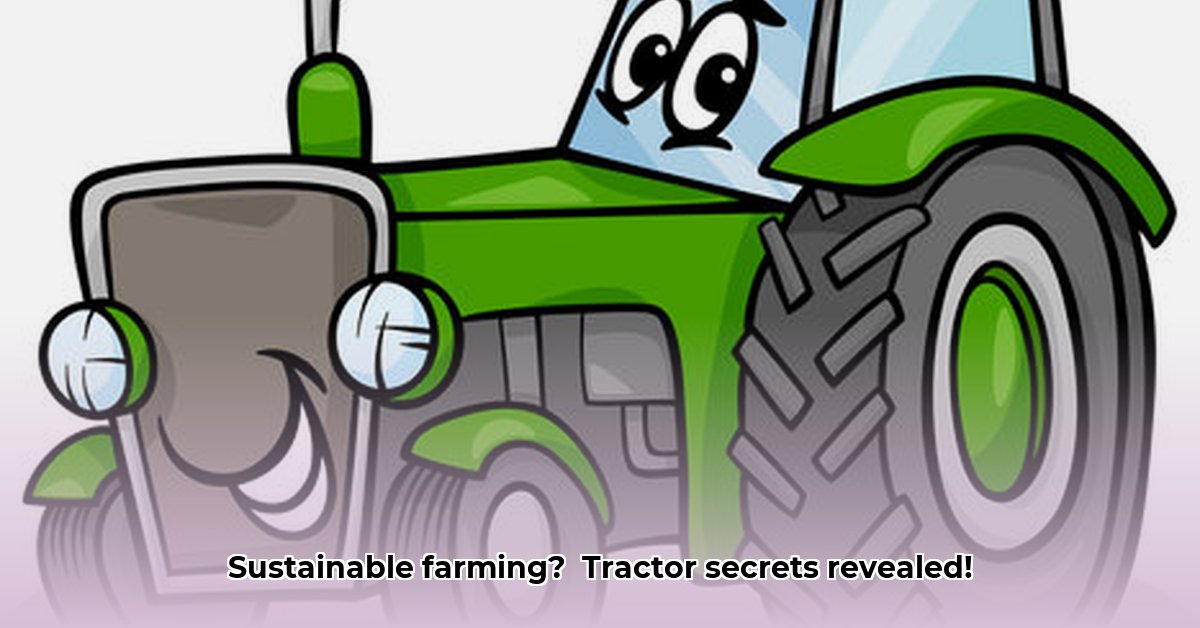
Tractor Cartoon Pic: A Visual Representation of Sustainable Farming
The accompanying tractor cartoon, though seemingly simple, powerfully symbolizes the shift towards sustainable agriculture. Its depiction – likely featuring a modern, efficient tractor with reduced environmental impact – subtly communicates the evolving relationship between technology and environmentally conscious farming practices. This isn't about rejecting tractors; it's about optimizing their use for a greener future. See more tractor cartoons for inspiration.
Modern Technology's Role in Sustainable Farming
Technology is revolutionizing sustainable agriculture, enabling precision and efficiency previously unimaginable. This isn't just about larger, more powerful machines. Improved technology allows farmers to:
- Optimize Resource Use: Precision planting systems minimize seed waste and fertilizer overuse, leading to healthier crops and reduced environmental impact.
- Reduce Waste & Improve Efficiency: GPS-guided tractors minimize fuel consumption by preventing overlapping passes, reducing both costs and emissions.
- Conserve Water: Smart irrigation systems utilize soil moisture sensors to adjust watering schedules, conserving water and minimizing environmental strain.
These advancements are not merely incremental; they represent a significant shift towards environmentally sound farming. How can we best leverage these technological advancements to further sustainable practices?
A Step-by-Step Guide to Sustainable Farming Practices
Inspired by the cartoon's message, here's a practical roadmap for adopting sustainable farming practices:
- Assess Current Practices: Begin by evaluating your existing farming methods. Identify areas where resource consumption can be reduced, and pinpoint opportunities for improvement.
- Prioritize Sustainable Technologies: Invest strategically in technologies that align with your farm's specific needs and maximize your return on investment (ROI). Begin with cost-effective upgrades before moving to more advanced equipment.
- Implement Gradual Changes: Avoid overwhelming yourself; start with one or two targeted improvements, gradually incorporating more sustainable practices as you gain experience and confidence.
- Monitor Progress & Adapt: Track your progress to gauge the effectiveness of your changes. Use data to refine your approach and make adjustments as needed. Sustainable farming is an iterative process.
- Collaborate & Share Knowledge: Connect with other farmers, agricultural experts, and organizations to share best practices and learn from their experiences. Knowledge sharing is key to widespread adoption of sustainable methods.
These steps can guide you in minimizing environmental impact and maximizing long-term farm profitability. What specific challenges do you anticipate encountering during this transition?
Addressing the Challenges of Sustainable Farming
While the transition to sustainable farming offers substantial benefits, it's crucial to acknowledge associated challenges:
- High Upfront Costs: The initial investment in new, more efficient equipment can be significant, particularly for smallholder farmers. Financing options such as government subsidies, microloans, and equipment leasing should be explored. How can we make sustainable technologies more accessible to all farmers?
- Training and Expertise: Learning to utilize these advanced technologies requires dedicated training and expertise. Access to educational resources and support systems is vital to successful implementation. Where can farmers acquire the necessary skills and knowledge?
- Market Dynamics: The market landscape—including consumer demand and pricing structures—can significantly impact the economic viability of sustainable farming practices. How can we incentivize sustainable practices through market mechanisms?
A Sustainable Future: The Bigger Picture
The tractor cartoon serves as a visual reminder that sustainable agriculture is not merely a trend; it is a necessity. By embracing technology, adopting efficient practices, and fostering collaboration, we can create a more sustainable food system that nourishes both people and the planet. What role do you envision playing in shaping this future?